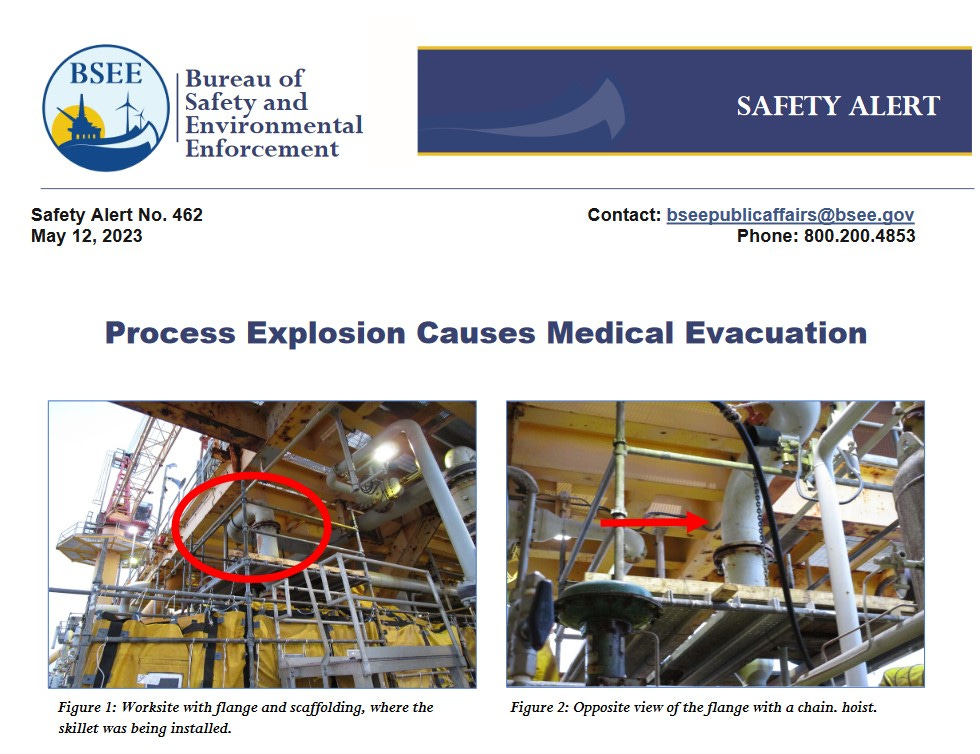The Bureau of Safety and Environmental Enforcement (BSEE) issues regular Safety Alerts. These Alerts are invaluable because they describe actual events. Generally, the Alerts describe and discuss occupational safety issues. It is also useful to look for any process safety lessons that they may provide.
In May of this year, they issued Bulletin No. 462 — Process Explosion Causes Medical Evacuation. The following quotation is taken from that publication.
Personnel failed to identify the possibility of pyrophoric materials within the piping
The Alert does not provide much more detail to do with the potential for pyrophoric materials being present. Questions to consider include,
What are pyrophoric materials?
What could form pyrophoric materials in this system?
How could the workers have detected their presence?
What precautions could they have taken?
What is the best emergency response?
Pyrophoric Materials
In response to the first question, here is what ChatGPT had to say (edited).
Pyrophoric materials are substances that can ignite spontaneously in the presence of air or oxygen at or below room temperature.
Pyrophoric materials are typically highly reactive metals or metal compounds, although some non-metallic substances can also exhibit pyrophoric properties.
Pyrophoric materials require special handling and storage precautions due to their potential for spontaneous combustion. They are often stored under inert atmospheres or in air-tight containers to prevent contact with oxygen or moisture. When working with pyrophoric materials, it is important to use appropriate safety measures, including the use of protective equipment, well-ventilated areas, and proper fire suppression systems.
Iron Sulfide
In this case of this incident, the pyrophoric material is presumably iron sulfide that was formed from iron oxide and hydrogen sulfide. Pyrophoric iron fires often occur when equipment is opened for inspection or maintenance.
The following is taken from an article by Kukesh Sahdev at chemresources.
Response
In the case of this incident, we are not told about the response of others at the platform to the “plume of smoke”. It is possible that the fire simply burned itself out. Otherwise, it could have been quenched with fire water.




